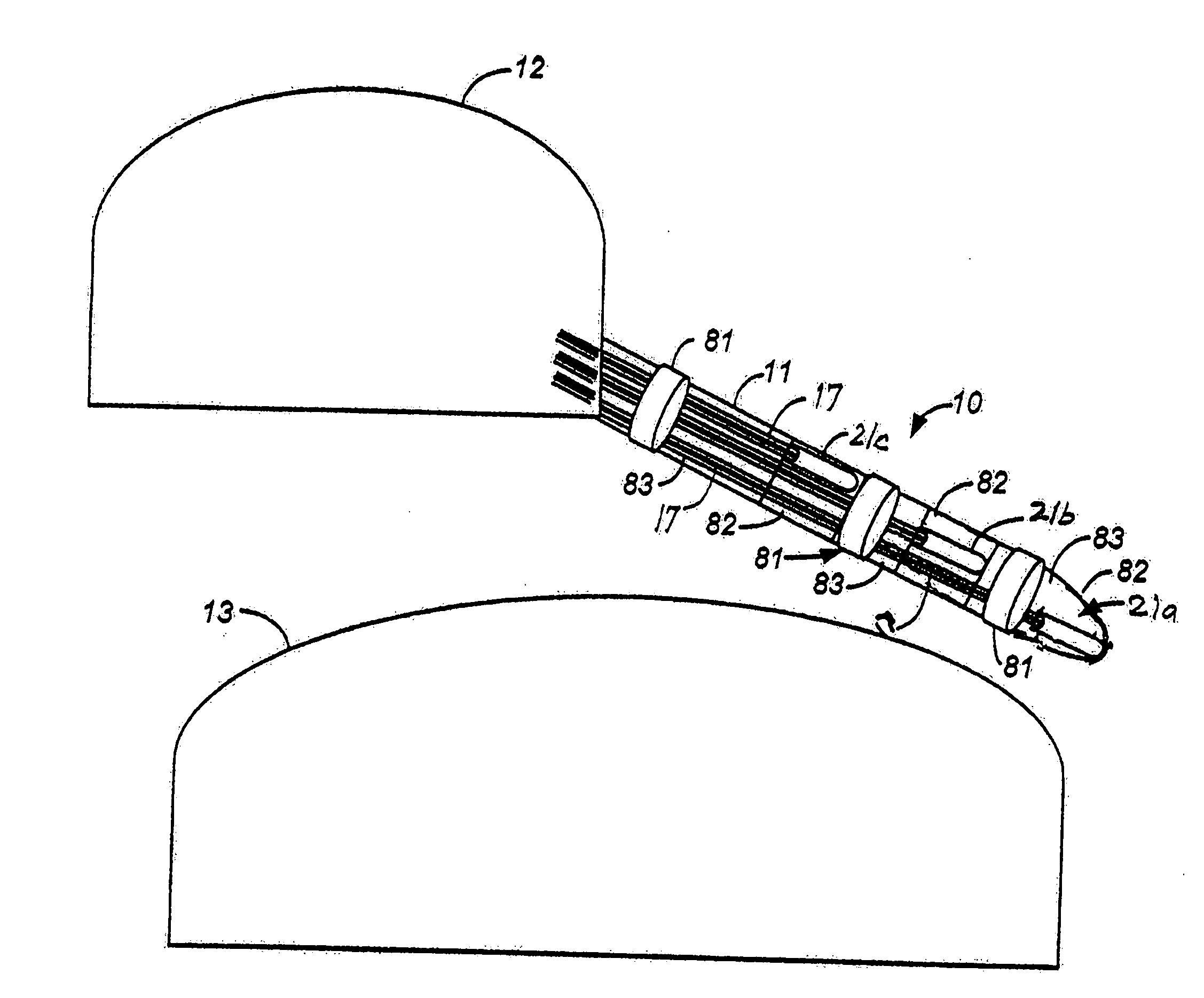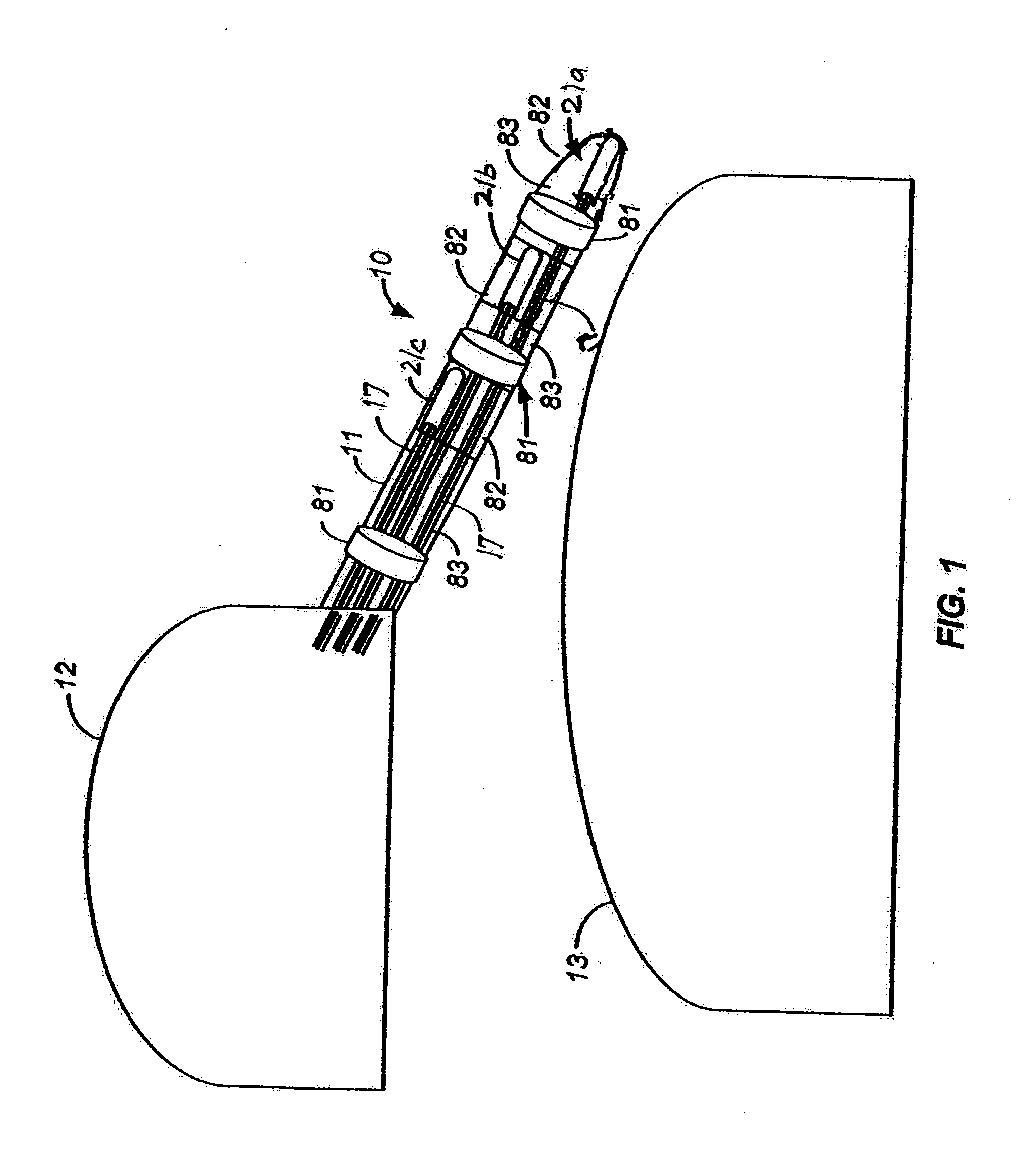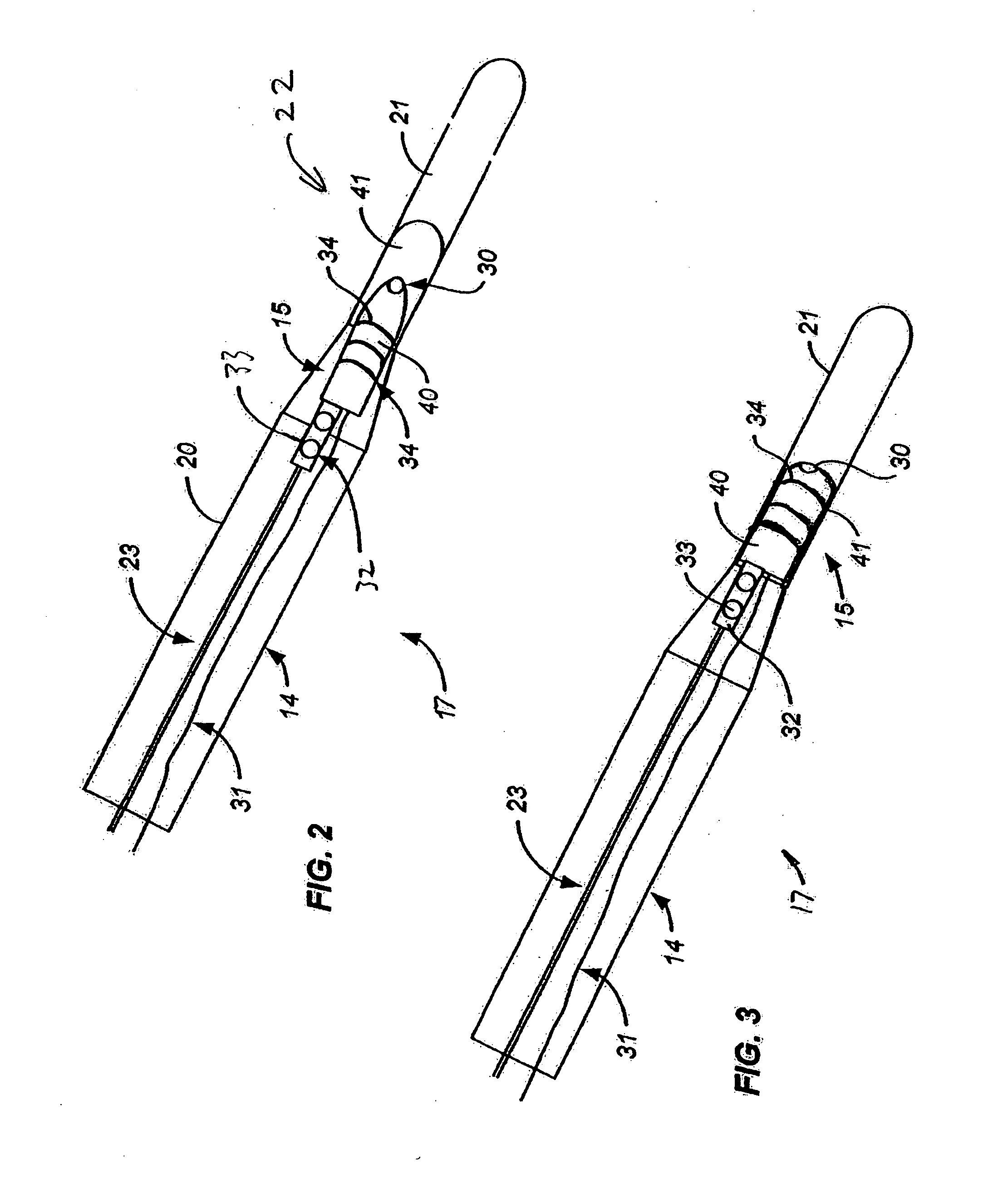Systems and methods for installation, design and operation of groundwater monitoring systems in boreholes
a monitoring system and underground cavern technology, applied in the direction of borehole/well accessories, fluid removal, survey, etc., can solve the problems of hydrostatic flooding, leakage of storage tunnels, and potential collapse, and the chemical properties of the underground caverns or tunnels will likely chang
- Summary
- Abstract
- Description
- Claims
- Application Information
AI Technical Summary
Benefits of technology
Problems solved by technology
Method used
Image
Examples
Embodiment Construction
[0058] The present invention provides systems and methods for monitoring groundwater within boreholes within the ground. Generally, the boreholes are created within rock media adjacent to manmade tunnels or caverns. Sensors are placed within access pipes (riser pipes) in the boreholes to monitor hydraulic pressure in order to sense potential changes within the ground thereby leading to potential problems with the tunnels or caverns. Additionally, groundwater samples may be obtained from the boreholes and tested for quality to watch for other potential problems, such as gas leakage or other radio activity, depending upon what is in the cavern or tunnel. For clarity and simplicity, the present invention will be described with reference to tunnels 13 that are defined or created under a minimum of 600 feet of ocean water and beneath the ocean floor. These tunnels are used to store liquefied natural gas (LNG) comprised of methane and butane. Hydraulic pressure from the ocean water column...
PUM
 Login to View More
Login to View More Abstract
Description
Claims
Application Information
 Login to View More
Login to View More - R&D
- Intellectual Property
- Life Sciences
- Materials
- Tech Scout
- Unparalleled Data Quality
- Higher Quality Content
- 60% Fewer Hallucinations
Browse by: Latest US Patents, China's latest patents, Technical Efficacy Thesaurus, Application Domain, Technology Topic, Popular Technical Reports.
© 2025 PatSnap. All rights reserved.Legal|Privacy policy|Modern Slavery Act Transparency Statement|Sitemap|About US| Contact US: help@patsnap.com



